Aeonium and Echeveria are two popular types of succulent plants that belong to the Crassulaceae family. Both plants are known for their unique and attractive rosette formation, and are commonly used as ornamental plants in gardens, rock gardens, and as potted plants. However, there are some important differences between these two types of plants. In this blog post, we will take a closer look at the physical characteristics, climate and habitat, cultivation and care, and the main differences between Aeonium and Echeveria.
Dig in!
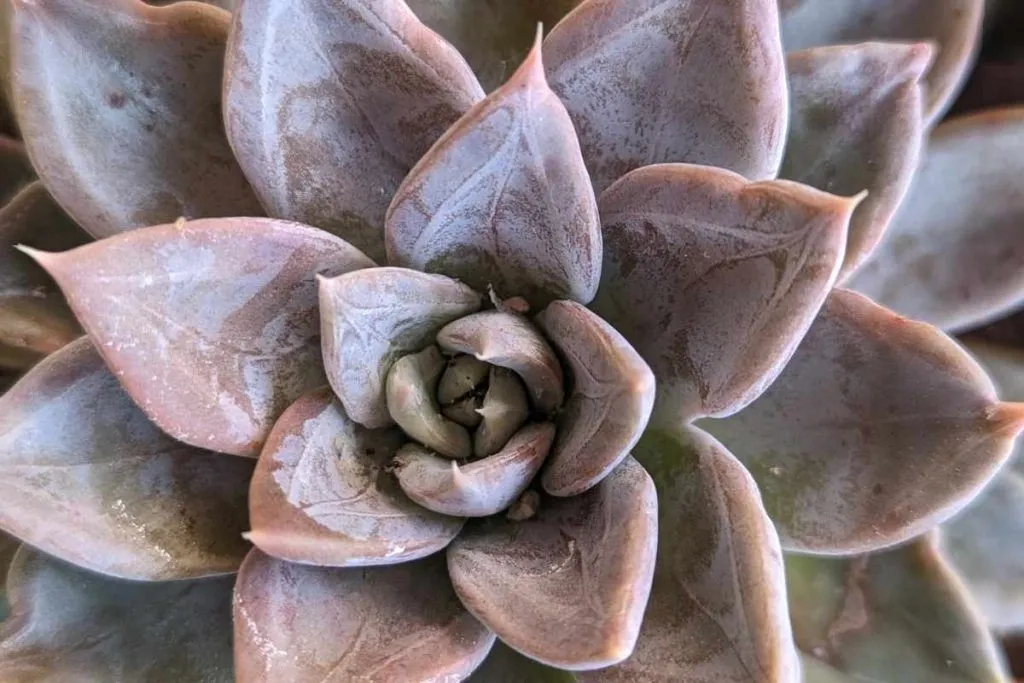
Physical Characteristics
Aeonium Characteristics
Aeoniums have a tall stem and large rosettes, with leaves that are typically thick, fleshy, and arranged in a rosette shape. They can be found in a wide variety of colors, including green, red, and purple. The edges of the leaves have serrated edges which is quite apparent in the picture below.
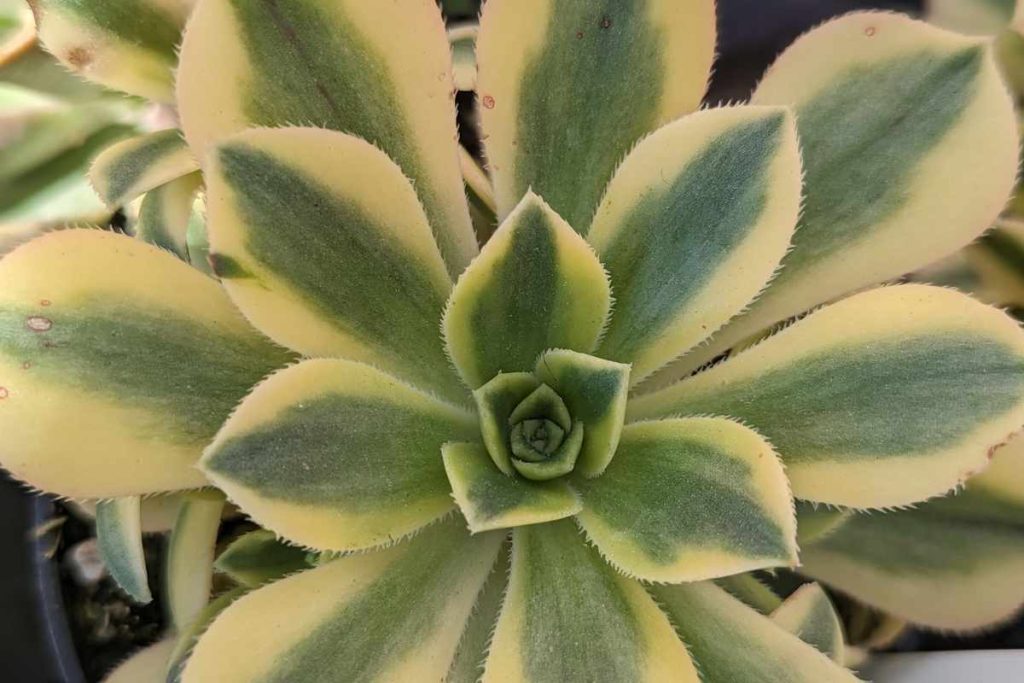
Echeveria Characteristics
On the other hand, Echeverias typically have smaller rosettes with thinner leaves that can range from a blue-gray to a vibrant green color. Echeveria leaves are often curved or folded and have a powdery surface. Echeveria leaves are generally thicker and will have smoother leaf edges.
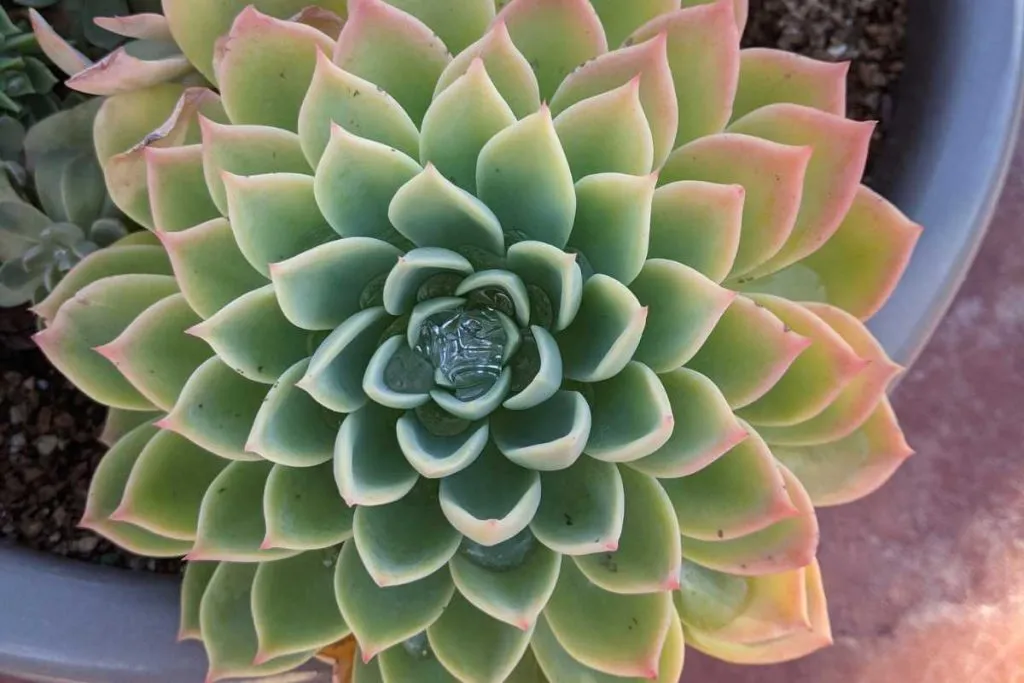
Size
In terms of size, Aeoniums can reach up to 3 feet tall and 3 feet wide, while Echeveria generally stays smaller, around 6 inches in height and width.
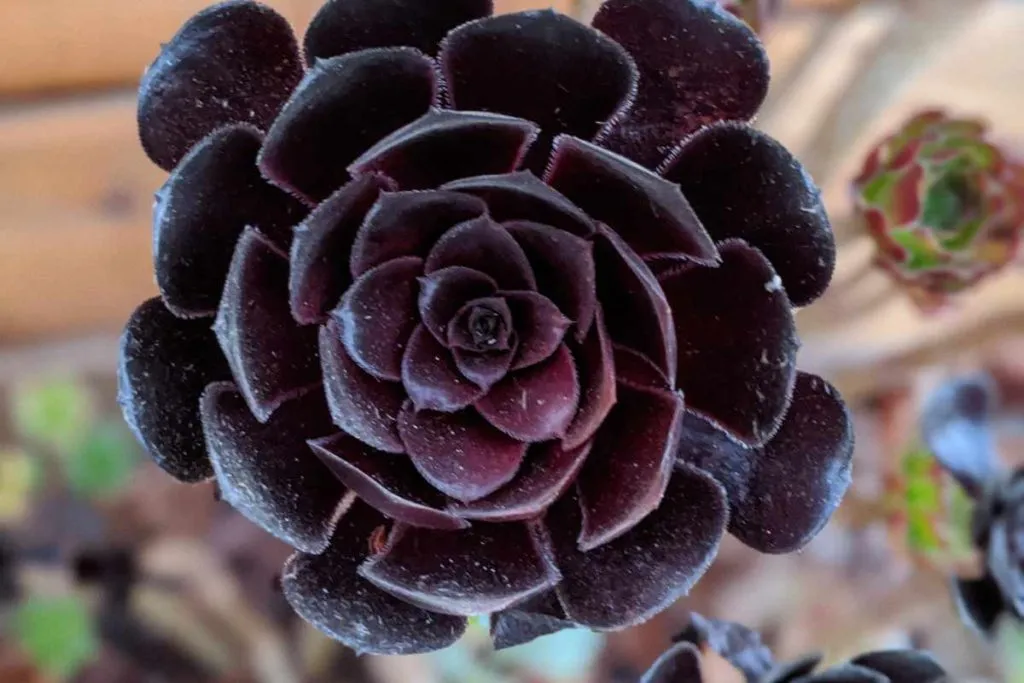
Climate and Habitat
Native Habitats
Both Aeonium and Echeveria are native to regions with a Mediterranean climate, such as parts of Africa and Mexico, and therefore prefer similar conditions.
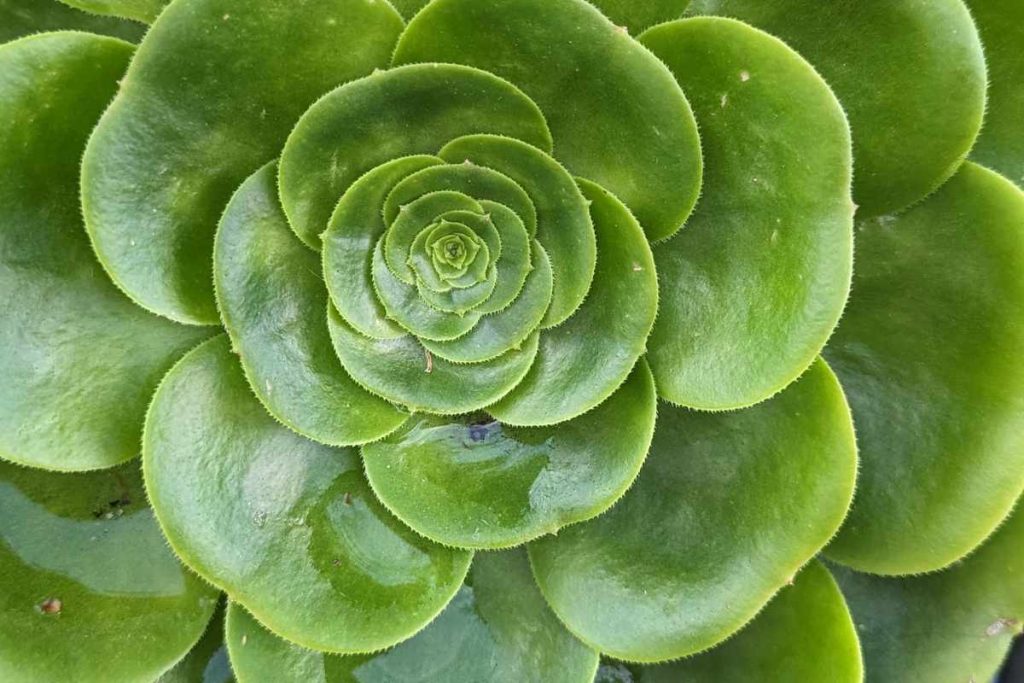
Soil Requirements
Aeonium and Echeveria thrive in well-draining soil to prevent stagnant water which causes root rot and fungus to form.
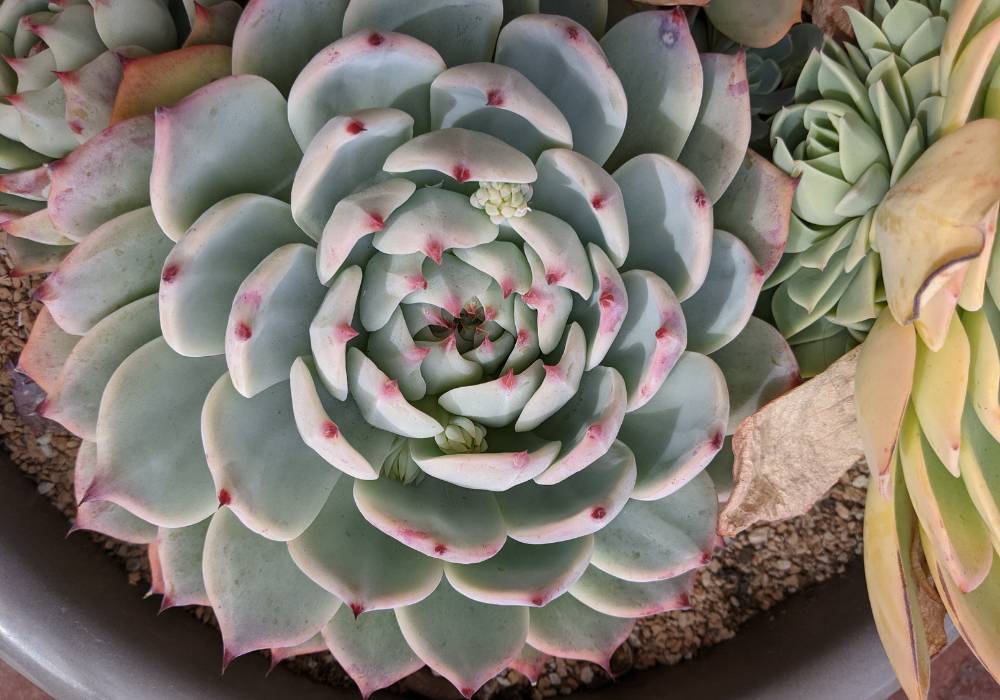
Temperature
However, Aeoniums are more tolerant of cooler temperatures and can handle a light frost, while Echeveria is more sensitive to frost and prefers temperatures above freezing.
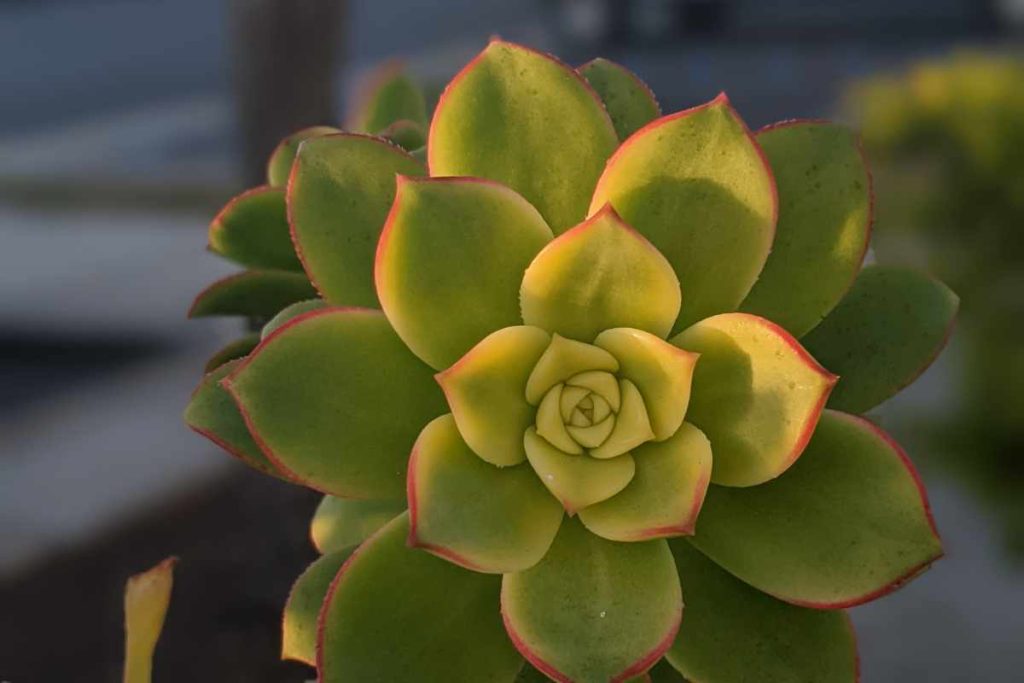
Light Needs
When it comes to light requirements, Echeveria is happy when exposed to bright light but will also grow in partial shade, while Aeoniums need some hours of direct sunlight. Too little light will cause both succulents to etiolate or stretch towards the nearest light source.
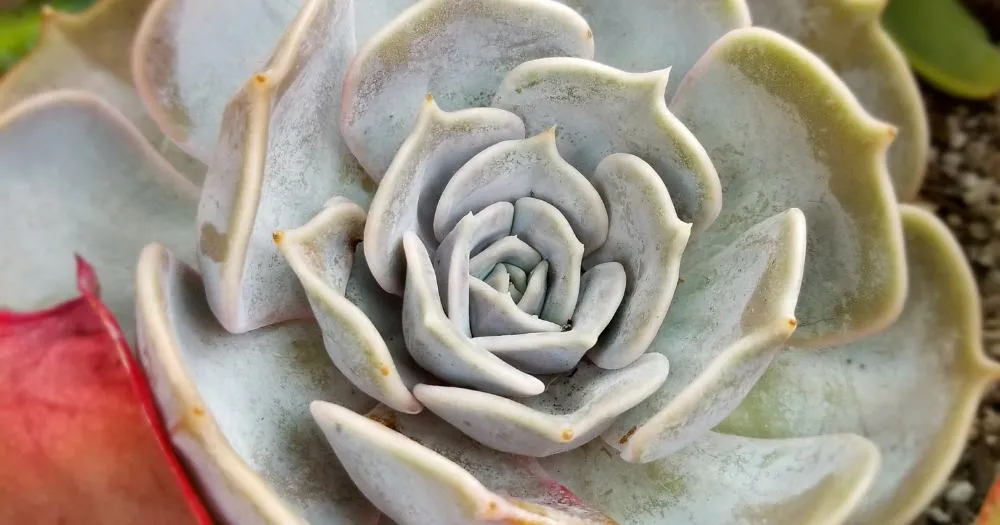
Cultivation and Care
Propagation
Aeoniums can be propagated by cuttings or by removing offsets from the base of the plant, while Echeveria can be propagated by leaves, offsets, or by seed. Propagating both by offsets is by far the easiest way to propagate.
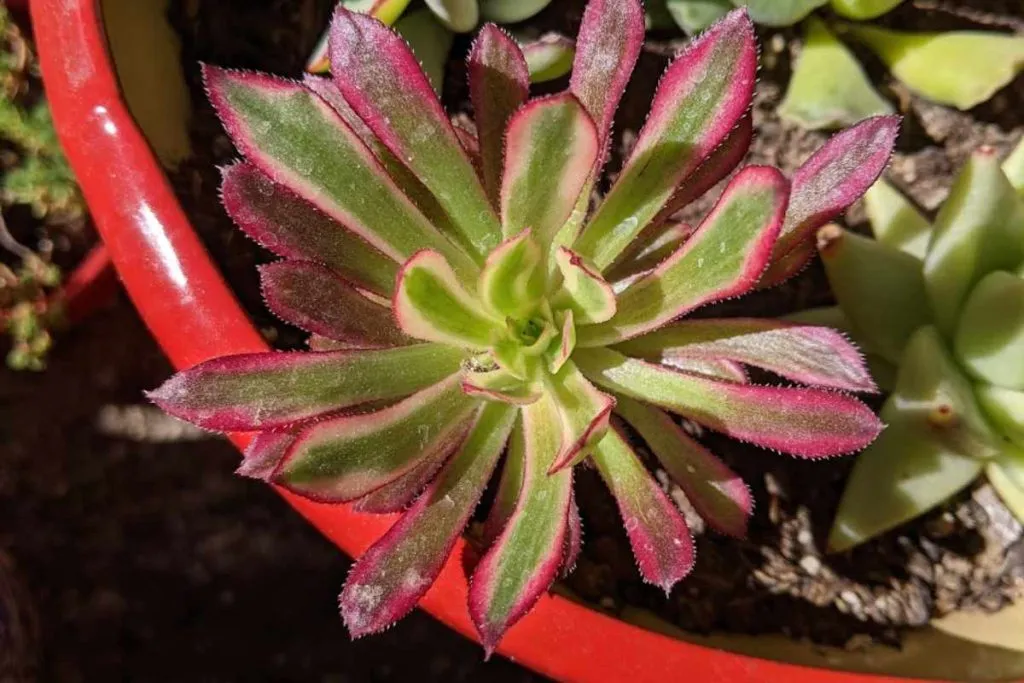
Watering Regimen
Both Aeonium and Echeveria are drought-tolerant and only need to be watered occasionally. It’s important to be careful not to over-water them as they can easily rot. Basically water deeply, but infrequently.
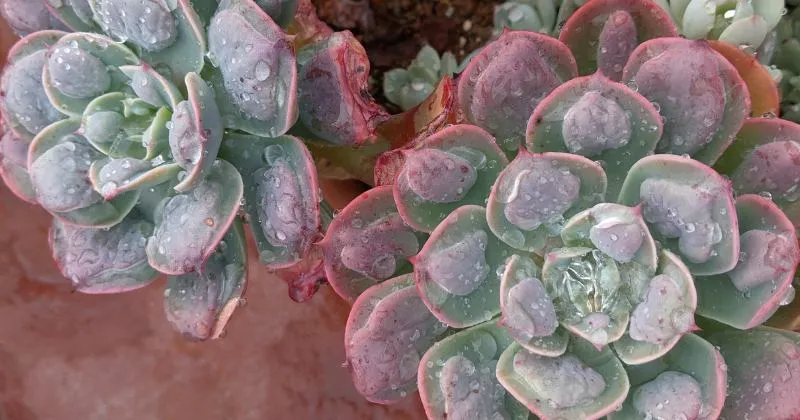
Pests
Both plants are susceptible to pests such as mealybugs, but Aeoniums are generally hardier and more resistant to pests and diseases than Echeveria. Treat both with neem oil or a systemic insecticide to remediate any pest infestations.
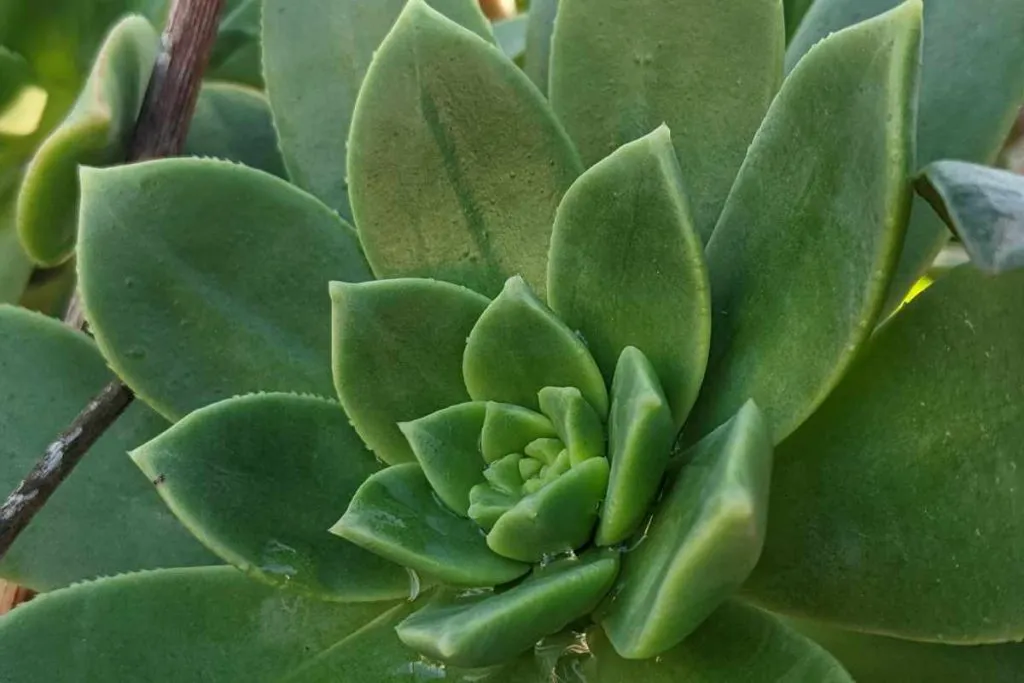
Key Differences
- Aeoniums have larger rosettes and taller stems compared to Echeverias.
- Aeoniums are more tolerant of cooler temperatures and can handle light frost, while Echeveria prefers higher temperatures.
- Aeoniums need some hours of direct sunlight while Echeveria can grow in partial shade.
- Aeoniums can be propagated by cuttings and by removing offsets, while Echeveria can be propagated by leaves, offsets or by seed.
- Aeoniums are generally hardier and more resistant to pests and diseases than Echeveria.
- Aeonium are monocarpic, meaning they bloom once and die affectionately called a “death bloom“, while Echeveria are polycarpic and can bloom many times over their lifetime.
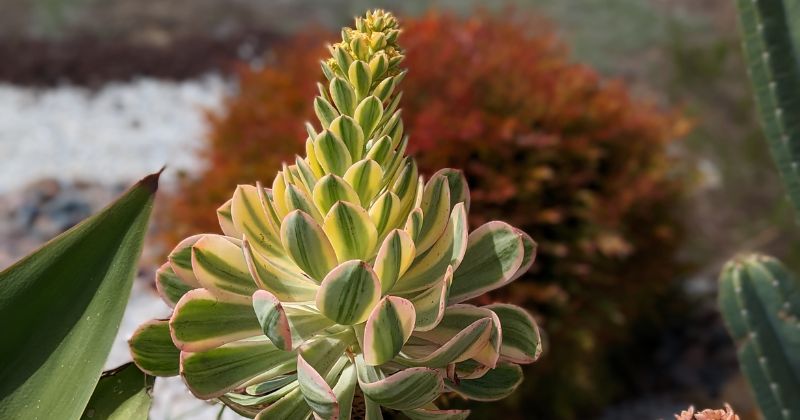
In conclusion, Aeonium and Echeveria are both beautiful and easy to care for succulent plants, with a few key differences. Aeoniums are taller and have larger rosettes, while Echeverias are smaller with thinner leaves. Aeoniums are more tolerant of cooler temperatures and can handle light frost, while Echeveria prefers higher temperatures. With proper care, both of these plants can add unique beauty to any garden or indoor space.
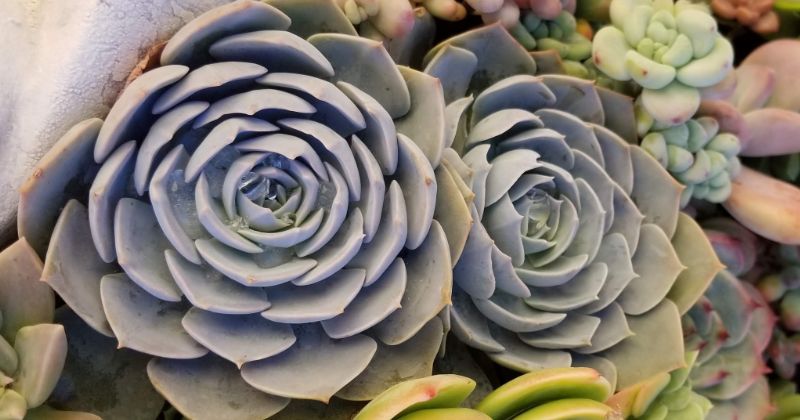

Where to Buy Succulents Online

